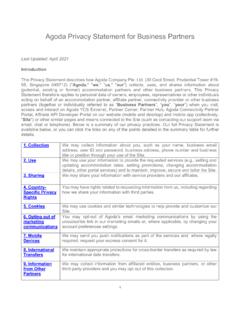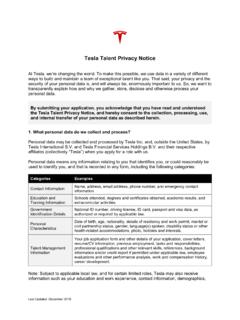Transcription of Review of Data Security, Consent and Opt-Outs
1 National data Guardian for Health and Care Review of data Security, Consent and Opt-OutsNational data Guardian 1 ContentsForeword by Dame Fiona Caldicott 21. Overview 32. data security standards for health and social care Summary of evidence and analysis Existing standards New data security standards People: Ensuring staff are equipped to handle information respectfully and safely, according to the Caldicott Principles Processes: Proactively preventing data security breaches Technology: Secure and up-to-date technology Embedding the standards 203.
2 Consent /opt-out of information sharing in health and social care Summary of evidence and analysis Developing an opt-out model Implementing the new opt-out model National data Guardian s proposed Consent /opt-out model 384. Next steps and implementation Public consultation Implementation Conclusion 44 Annex A. National data Guardian s Review Terms of Reference 45 Annex B. Members of the National data Guardian s Panel 46 Annex C. Organisations consulted during the Review 47 Annex D. The seven Caldicott Principles 49 Annex E.
3 Analysis of existing standards 50 Annex F. Evidence and analysis 54 Annex G. Summary of terms used in the report 562 Reviw eofDevefateScie fuwSfryeov,fe cfCeSyfnfsydiyOfwufDevefpy-tSivNlfCw Gy vfe cf12v31tvGForeword by Dame Fiona Caldicott Everyone who uses health and care services should be able to trust that their personal confidential data is protected. People should be assured that those involved in their care, and in running and improving services, are using such information appropriately and only when absolutely necessary.
4 Unfortunately trust in the use of personal confidential data has been eroded and steps need to be taken to demonstrate trustworthiness and ensure that the public can have confidence in the the beginning of September 2015, the Secretary of State for Health asked me, as the National data Guardian, to work alongside the Care Quality Commission (CQC), and carry out an intensive Review to recommend: new data security standards, a method for testing compliance against these standards, and a new Consent or opt-out model for data sharing in relation to patient confidential data .
5 This Review follows two previous reviews. In 1996-7, I chaired a Review on the use of patient identifiable data where we recommended six principles for the protection of people s confidentiality, which became known as the Caldicott principles . In 2013, I led the Information Governance Review and we recommended an additional Caldicott principle setting out that the duty to share information can be as important as the duty to protect patient agreed to undertake this third Review for two reasons. Firstly, there has been little positive change in the use of data across health and social care since the 2013 Review and this has been frustrating to see.
6 Secondly, because I believe we have a very significant opportunity now to improve the use of data in people s interests, and ensure transparency for the public about when their data will be used and when they can opt out of such have worked alongside CQC, which was asked to Review the current approaches to data security in NHS organisations that provide services. Its work has been invaluable in developing an evidence base for the new data security standards which are set out in this report. The data security standards are intended to be applied across all health and social care organisations.
7 Further work will be needed to establish the validity of the new data security standards for organisations providing social care, as this was not included in the CQC security is also integral to the second part of this Review : designing a model for information-sharing. The trust needed for effective information-sharing cannot be ensured without secure systems and easily understood explanations of how information and privacy are protected. I have proposed a new Consent /opt-out model that describes clearly when information is used, and when patients have a choice to opt out of their personal confidential data being used.
8 The model does not supersede any of the existing Caldicott principles. Patients and service users should not be surprised that an appropriate professional has access to information about them when they seek care, and should be confident that only the minimum amount of information needed to provide that is submitted this Review to the Government in March 2016. Since then I have taken the opportunity to update some references, but have not made any changes of was a short Review and significant work will need to be undertaken to implement the recommendations, which should include a full and comprehensive public consultation.
9 A key aspect of this work must be a dialogue with the public. We owe it to citizens to enable them to understand data usage as fully as they wish, and ensure that information about how data is accessed, by whom, and for what purposes, is available. This work is part of a wider dialogue that should be conducted on data use across different sectors. Health and social care data , although unique, cannot be isolated from that Fiona Caldicott, MA FRCP FRCP sych National data GuardianJune 2016 Overview 31. This is a report about trust.
10 It addresses the question of what more can be done to build trust in how the NHS and social care services look after people s confidential data and use it Health and social care services have always depended on trust. People must feel able to discuss sensitive matters with a doctor, nurse or social worker without fear that their information may be improperly disclosed. People also expect that this confidential information will be shared with other professionals in the care teams supporting them. Now, as health and social care become increasingly integrated, and as more data is held on computers (and computers are becoming more powerful), it is becoming ever more important that people understand when and how information is shared, how privacy is protected, and how sharing information benefits them and This report focuses particularly on two aspects of people s trust.

















